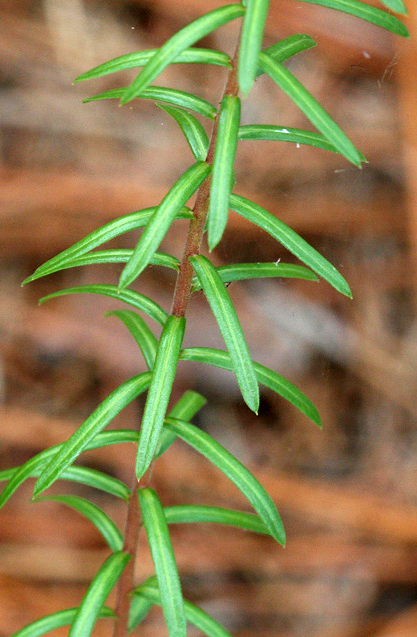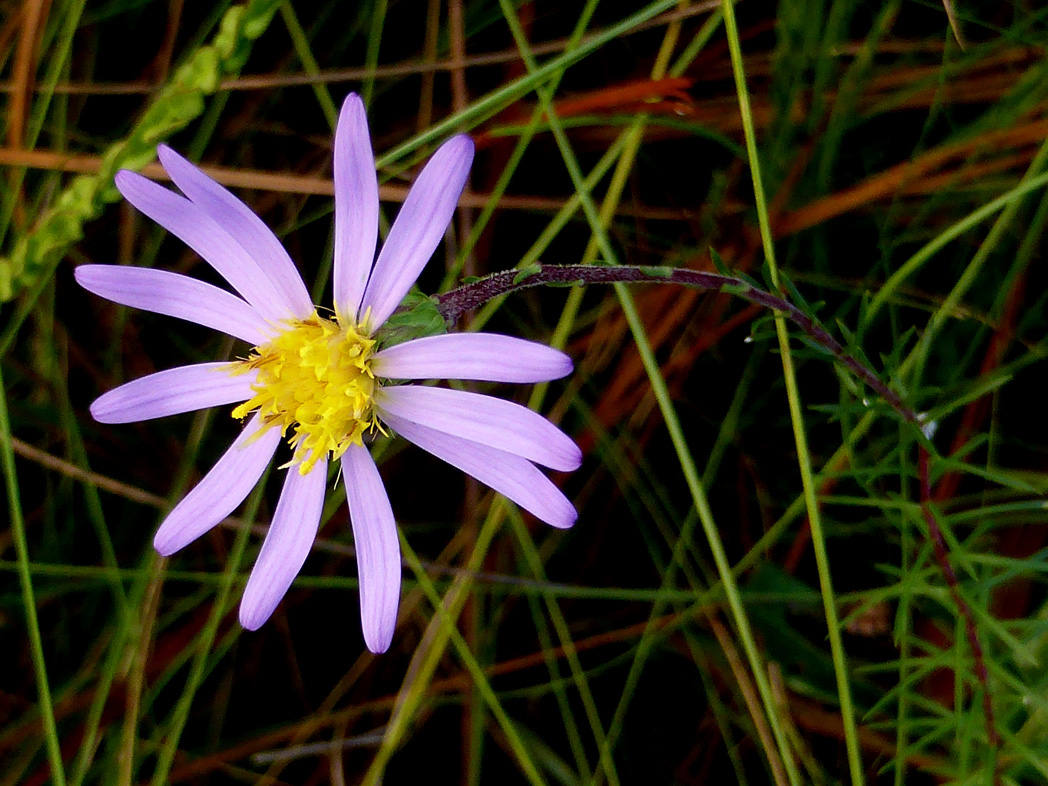Flaxleaf aster
Pictured above: Flaxleaf aster (Ionactis linariifolia) by Eleanor Dietrich. Click on terms for botanical definitions. View post as a PDF.
Flaxleaf aster (Ionactis linariifolia) is a petite perennial wildflower that occurs in the sandhill and pine flatwoods communities of Florida’s Panhandle. It blooms primarily in October and November, but may bloom as early as September. The flowers attract a variety of pollinators, particularly bees and butterflies.
Flaxleaf aster’s small (about 1 inch in diameter), compound flowers are born in clusters atop thin, rigid stems that branch out from a single base. Each flower consists of many lavender to whitish-purple ray florets arranged around a center of yellow to reddish-orange disk florets. Leaves are relatively long (1–1½ inches), stiff and needle-like. Leaf arrangement may be alternate or whorled.
The genus name Ionactus is from the Greek iódis, meaning “violet,” referring to the bloom color. The species epithet linariifolia is from the Latin linearis, or “linear,” and folium, meaning “leaves.” Flaxleaf aster was originally classified by Carolus Linnaeus as Aster linariifolius, but was later moved to its own genus.
Family: Asteraceae (Aster, composite or daisy family)
Native range: Panhandle, from Wakulla County west, and Nassau County
To see where natural populations of Flaxleaf aster have been vouchered, visit florida.plantatlas.usf.edu.
Lifespan: Perennial
Hardiness: Zones 8A–8B
Soil: Dry to moist, well-drained sandy soils
Exposure: Full sun to minimal shade
Growth habit: < 2’ tall
Flaxleaf aster may occasionally be available from nurseries that specialize in Florida native plants. Visit www.PlantRealFlorida.org to find a nursery in your area.


